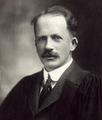University Of Aberdeen
The university as it is currently constituted was formed in 1860 by a merger between King's College and Marischal College, a second university founded in 1593 as a Protestant alternative to the former. The university's iconic buildings act as symbols of wider Aberdeen, particularly Marischal College in the city centre and the crown steeple of King's College in Old Aberdeen. There are two campuses; the predominantly utilised King's College campus dominates the section of the city known as Old Aberdeen, which is approximately two miles north of the city centre. Although the original site of the university's foundation, most academic buildings apart from the King's College Chapel and Quadrangle were constructed in the 20th century during a period of significant expansion. The university's Foresterhill campus is next to Aberdeen Royal Infirmary and houses the School of Medicine and Dentistry as well as the School of Medical Sciences. Together these buildings form one of Europe's largest health campuses. The annual income of the institution for 2023–24 was £264 million of which £56.9 million was from research grants and contracts, with an expenditure of £188.9 million.
Aberdeen has educated a wide range of notable alumni, and the university played key roles in the Scottish Reformation, Scottish Enlightenment, and the Scottish Renaissance. Five Nobel laureates have since been associated with the university: two in Chemistry, one in Physiology or Medicine, one in Physics, and one in Peace.
History
King's and Marischal Colleges
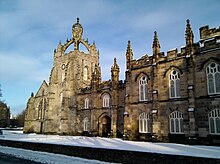
There appears to have existed in Old Aberdeen, from a very early period, a studium generate, or university, attached to the episcopal chapter of the See of Aberdeen. It is said to have been founded in 1157 by Edward, Bishop of Aberdeen, and although, according to Hector Boece, it still existed at the period when King's College was founded, it is probable that it had in some way ceased to answer the purposes which it must have been designed to serve, since King James IV, in his letter to Pope Alexander VI, requesting him to found a university in Old Aberdeen, mentions as the chief motive for the undertaking, the profound ignorance of the inhabitants of the north of Scotland, and the great deficiency of properly educated men to fill the clerical office in that part of his kingdom.
The first university in Aberdeen, King's College, formally The university and King's College of Aberdeen (Collegium Regium Aberdonense), was founded on 10 February 1494 by William Elphinstone, Bishop of Aberdeen, Chancellor of Scotland, and a graduate of the University of Glasgow drafting a request on behalf of King James IV to Pope Alexander VI resulting in a papal bull being issued. It seems that James was keen to ensure that Scotland had as many universities as England at the time, and it was to possess all the privileges enjoyed by those of Paris and Bologna, two of the most highly favoured in Europe. The university, modelled on that of the University of Paris and intended principally as a law school, soon became the most famous and popular of the Scots seats of learning, largely due to the prestige of Elphinstone and his friend, Hector Boece, the first principal appointed in 1500. Its aim was to train doctors, teachers and clergy who would serve the communities of northern Scotland, as well as lawyers and administrators for the Scottish Crown. It was a collegiate foundation with 36 full-time staff and students and walls protecting it from the outside world. In 1497 the college established the first chair of medicine in the English-speaking world.
The first book (there was no printing press in Scotland at the time) to be printed in Edinburgh and in Scotland was the Aberdeen Breviary, which was written by both Elphinstone and Boece in 1509.
Following the Scottish Reformation in 1560, King's College was purged of its Roman Catholic staff but in other respects was largely resistant to change. George Keith, the fifth Earl Marischal, was a moderniser within the college and supportive of the reforming ideas of Peter Ramus and Andrew Melville. In April 1593 he founded a second university in the 'New Town', Marischal College. It is also possible the founding of the Fraserburgh University in nearby Fraserburgh by Sir Alexander Fraser, a business rival of Keith, was instrumental in its creation. Aberdeen was highly unusual at this time for having two universities in one city: as 20th-century university prospectuses observed, Aberdeen had the same number as existed in England at the time (the University of Oxford and University of Cambridge).

Initially, Marischal College offered the principal of King's College a role in selecting its academics, but this was refused – the first blow in a developing rivalry. Marischal College, in the commercial heart of the city (rather than the ancient but much smaller collegiate enclave of Old Aberdeen), was quite different in nature and outlook. For example, it was more integrated into the life of the city, such as allowing students to live outwith the college. The two rival colleges often clashed, sometimes in court, but also in brawls between students on the streets of Aberdeen. Duncan Liddell endowed the first chair in mathematics at Marischal College in 1613, but the first professor was not appointed until 1626.
As the institutions put aside their differences, a process of attempted (but unsuccessful) mergers began in the 17th century. During this time, both colleges made notable intellectual contributions to the Scottish Enlightenment. Both colleges supported the Jacobite rebellion and following the defeat of the 1715 rising were largely purged by the authorities of their academics and officials.
King Charles' University (1641–61) and the merger of the two colleges (1860)
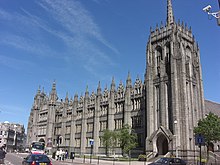
The nearest the two colleges had come to full union was as the Caroline University of Aberdeen, a merger initiated by Charles I in 1641, which united the two colleges for twenty years. Following the civil conflicts of the Wars of the Three Kingdoms, a more complete unification was attempted following the ratification of Parliament by Oliver Cromwell during the interregnum in 1654. This united university survived until the Restoration whereby all laws made during this period were rescinded by Charles II and the two colleges reverted to independent status. Charles I is still recognised as one of the university's founders, due to his part in creating the Caroline University and his benevolence towards King's College.
The Aberdeen Philosophical Society (known locally as the Wise Club) was created by Thomas Reid, George Campbell, David Skene, John Gregory, John Stewart, and Robert Traill, and held its first meeting in the Old Red Lion Inn on 12 January 1758. From its inception, the society was an intimate, private body whose members were drawn exclusively from the learned professions, and this feature differentiated it from the more open and socially inclusive societies like the Glasgow Literary Society or the Select Society of Edinburgh. Over 133 papers were given and discussed at the meeting, and many of these formed the basis of books subsequently published. The society was eventually disbanded in March 1773. The society and its individual members played a key role in the Scottish Enlightenment, and it was the most important forum for the promotion of enlightened thought and values in Aberdeen. The Philosophical Society was revived in 1840, with the object of receiving and debating original scientific, literary and philosophical papers from its members; however, the decision was taken on 13 September 1939 to discontinue its meetings, chiefly in view of the difficulties posed by the war, although it does not appear to have been ever formally wound up.
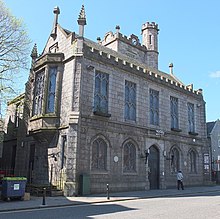
The Free Church of Scotland founded Christ's College in Aberdeen in 1843 for the training of ministers. An extravagant Gothic building, with a commanding oriel window and tower, was erected for the college at the western end of Union Street in 1850. Linked to the college was a museum and library (containing 17,000 volumes). Following the church reunion of 1929, Christ's College became a Church of Scotland college and was integrated into the University of Aberdeen. The college building is no longer used by either the church or the university, and the college is contained completely within the buildings of King's College, maintaining its own divinity library. The university hosted its first meeting of the British Science Association in 1859. Having no suitable meeting place to host the meeting, the town raised the money themselves by personal subscription and built the Music Hall. It was capable of holding about 2,500 people and so successful was the meeting that associate membership, necessary to gain access to the proceedings, had to be capped. Prominent among the local organisers were Professors James Clerk Maxwell (Natural Philosophy) and James Nicol (Geology) of Marischal College. Prince Albert, the Prince Consort, took on the role of president for the year. The young Maxwell himself, still only 28, spoke on three different subjects, one being a presentation of his newly discovered law of molecular velocities in a gas. The 'Maxwell distribution law', as it is now known, is the law of physics with the strongest Aberdeen connection. In addition, Sir Charles Lyell, president of the Geological Section of the British Academy, and a champion Charles Darwin's work, made one of the first announcements that Darwin had undertaken a body of work on evolution and was about to release his findings. The organisers felt that they might be risking something in holding the meeting much further north than they had done before but in the event the Aberdeen meeting was the most well attended the BA had ever had.
Further unsuccessful suggestions for union were brought about throughout the 18th and early 19th centuries. William Ogilvie, known as the Rebel Professor, proposed a paper on the union and reform of the two colleges in 1787, but the proposals were rejected by seven (known as the 'seven wise Masters') out of ten professors at King's. The evolving examination system and university research now required much higher academic standards from the students. The two colleges in Aberdeen merged on 15 September 1860 in accordance with the Universities (Scotland) Act 1858, which also created a new medical school at Marischal College. The 1858 Act of Parliament stated the "united University shall take rank among the Universities of Scotland as from the date of erection of King's College and University." The university is thus Scotland's third oldest and the United Kingdom's fifth oldest university.
The transference of the arts classes from Marischal to King's College required the extension of King's at the cost of £20,000. This included the rebuilding of two sides of the quadrangle for the class-rooms (1862) and the erection of the library (1870), which for many years had occupied the nave of the chapel.
In 1873, university students voted against university degrees being open to women. However, all faculties were open to women in 1892, and in 1894 the first 20 matriculated females began their studies at the university. Four women graduated in arts by 1898, and by the following year, women made up a quarter of the faculty.
The modern university

The closing of the quadrangle of Marischal College was completed during the university's quatercentenary in 1906, which was officially opened by Edward VII and Alexandra, and which saw some of the most extravagant celebrations and expressions of civic pride ever demonstrated in Aberdeen. Four days of festivities took place across the city, which included church services, banquets, torchlight processions, and fireworks displays. In all, the cost of the four days of festivities was the modern equivalent of £1.34 million. The ceremony saw the granting of honorary degrees to over a hundred public and academic figures from across the academic world. In an extravagant display of luxury, Lord Strathcona, the then chancellor of the university, spent £8518 in entertaining around 2500 invited guests in a tent specially designed for the occasion. After having received an honorary degree (LLD) in 1905, Thomas Hardy celebrated Aberdeen as 'a University which can claim in my opinion to an exceptional degree that breadth of view & openness of mind that all Universities profess to cultivate, but many stifle'. Hardy wrote a poem for a special number of the student publication, Alma Mater, in celebration of the quatercentenary of the university.
'I looked and thought, "All is too gray and cold
To wake my place-enthusiasms of old!"
Till a voice passed: "Behind that granite mien
Lurks the imposing beauty of a Queen."
I looked anew; and saw the radiant form
Of Her who soothes in stress, who steers in storm,
On the grave influence of whose eyes sublime
Men count for the stability of the time'
In the 20th century, the university expanded greatly, particularly at King's College. New buildings were constructed on the land around King's College throughout the 20th century. Initially, these were built to match the ancient buildings (e.g. the New King's lecture rooms and Elphinstone Hall), but later ones from the 1960s onward were constructed in brutalist style. Meanwhile, the Foresterhill campus began to train medical students in the 1930s next to Aberdeen Royal Infirmary.

During the mid-20th century departments which had been at Marischal College moved into one of these new buildings (most at King's College) and by the late 20th-century Marischal College had been abandoned by all but the Anatomy Department, a graduation hall and the Marischal Museum (Marischal College has now been restored as the headquarters of Aberdeen City Council, which is leasing a portion of the complex from the university). Following extensive fundraising, a £57 million new university library (the Sir Duncan Rice Library) opened in autumn 2011 at the King's College campus to replace the outgrown Queen Mother Library and was officially opened by the Queen in September 2012. Today, most students spend most of their time in modern buildings which provide up-to-date facilities for teaching, research and other activities such as dining. However, the old buildings at King's College are still in use as lecture and tutorial rooms and accommodation for various academic departments.
In February 2020, the Scottish Funding Council (SFC) found that in approving a financial settlement agreement with the former Principal Sir Ian Diamond, the university failed to make best use of public funds or exercise good governance. As a result of the investigation, the university was ordered to repay £119,000 of grant finance to the SFC and undertake an externally-facilitated examination of its governance and culture.
Modern Languages
On 5 December 2023 it was announced that a working group, chaired by Professor Karl Leydecker, had been set up to look at the future of teaching of modern languages at the University. It was looking at three options, "all of which involve the end of single honours French, Gaelic, German and Spanish", and was engaging in consultation with student and faculty. It was stated that departmental "income does not cover even the direct costs of staff delivering Modern Languages provision before any central costs ... leading to a projected deficit for Modern Languages of £1.64m in 2023/24." The financial statements were contested by staff and UCU. At an online meeting of the University Senate on 6 December, senators voted 78–15 in favour of a motion which "called for an immediate halt in the consultation process until an overall plan is presented in detail to Senate for appropriate scrutiny." Five senators abstained. On 8 December The Gaudie reported that staff had been sent 'Risk of Redundancy' letters which stated that staff who are made redundant would receive four months pay. This contrasts with the University's severance policy which states that "the maximum redundancy package available to staff is 12 months of pay or £100,000; whatever is lower."
A group of academics from the department released a statement which described the proposed changes as "institutional vandalism". They continued "The management's self-destructive plan would see the University of Aberdeen become the first ancient university in the world not to offer language degrees in one of the most monolingual countries"
A University statement said: "Our difficulty is that this academic year, following longer term declining demand in the UK for traditional specialist language study, a total of just five students began Single Honours across our four Modern Language programmes including Gaelic."
A public petition to save Modern Languages gained over 18,600 signatures. After the submission of two motions calling to protect languages degrees at the University of Aberdeen, a debate took place in Scottish Parliament, where the University was urged to explore alternative options. EU consulates also spoke out in favour of the languages programmes., as well as scome of Scotland's best-known folk music starts. The local UCU branch successfully balloted for strike action at the University, in support of Modern Languages degrees. Staff-led business proposals were positively received and the consultation on Modern Languages was ended in March 2024 with the removal of risk of compulsory redundancies.
Buildings and campuses
The university's main campus is at King's College in Old Aberdeen, where the original buildings are still in use in addition to many 20th century buildings. A second campus at Foresterhill accommodates the School of Medicine, Medical Science and Nutrition. In addition, there are smaller facilities at other sites such as the Royal Cornhill Hospital to the west of the city centre, and the Rowett Institute in Bucksburn.
Current campuses
King's College

The King's College campus covers an area of some 35 hectares around the ancient King's College buildings and the High Street. It hosts around two-thirds of the university's built estate and most student facilities, and lies 2 miles north of Aberdeen city centre. The university does not own all the buildings on the "campus" which also include private houses, shops and businesses (although many of these rely heavily on custom from the university community) and it is best thought of as a district of the city dominated by the university. It can be reached from the city centre by bus routes 1, 2, 13, 19 and 20 operated by First Aberdeen and from northern Aberdeenshire or Aberdeen bus station by various routes operated by Stagecoach Bluebird.
The historic King's College buildings form a quadrangle with an interior court, two sides of which have been rebuilt and expanded with a library wing in the 19th century. The Crown Tower and the chapel, the oldest parts, date from around 1500. The original foundation contained the chapel, the Great Hall and living accommodation, with its own kitchen and brewery, a well in the quadrangle, and a college garden to provide herbs and vegetables. The Grammar School was just outside the walls, in front of the college. The Crown Tower is surmounted by a structure about 40 ft (12 m) high, consisting of a six-sided lantern and Imperial crown, both sculptured, and resting on the intersections of two arched ornamental slips rising from the four corners of the top of the tower. This crown, also known as the "Crown of Kings", frequently acts as a symbol of the university. The choir of the chapel contains original oak-canopied stalls, miserere seats, and lofty open screens in the French flamboyant style. They were preserved by the college's Principal during the Reformation, who fought off local barons who had attacked the nearby St Machar's Cathedral. The Cromwell Tower, created between 1658 and 1662 opposite the Crown Tower, was originally built as residential accommodation, but an observatory was built on top in 1826. The library wing was converted into an exhibition and conference venue in the 1990s and today also houses the university's Business School.
The first of the modern age of construction in the King's campus began with the construction in 1913 of the New Building (now known as "New King's"), largely in a similar architectural style to the old buildings. A large manse located on the lawn opposite King's College was removed before the First World War. New King's groups to form a yet larger quadrangle-like green for the campus also bordered by the High Street, King's and Elphinstone Hall, a traditional 1930 replacement for the Great Hall. The Elphinstone Hall was subsequently used as a dining facility but is now used for graduations, examinations, fairs, and other large university events.
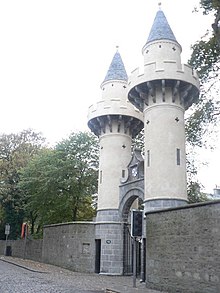
However, most students and staff spend relatively little time in these historic buildings, with a large number of modern ones housing most facilities and academic departments. Most date from the second half of the 20th century. Some of these echo the existing architecture of Old Aberdeen, such as the Fraser Noble Building with its distinctive concrete crown designed to resemble the one adorning King's College. Other buildings were constructed of stone in the 1950s (e.g. the Taylor Building and Meston Building). A number of other buildings are designed in the brutalist style, such as the Arts Lecture Theatre and adjoining William Guild Building, opened in 1969 to house the School of Psychology. Also on the site is the Cruickshank Botanic Garden which was presented to the university in 1899 and is open to the public.
The Powis Gateway forms the east gate and archway from College Bounds, Old Aberdeen. These oriental style towers with minarets have provoked much interest over the years. At one time there was a portrait of John Leslie dressed in Turkish costume, on the walls of Powis House, but there is no obvious connection between the estate and the Middle East. The gateway is also adorned with panels bearing the coats of arms of the Lairds of Powis. The Estate of Powis was owned by the Frasers—their crest is shown on the towers—until the marriage of an heiress to a Leslie. Powis House was built by Hugh Leslie. The house was the home of John Leslie, Professor of Greek at Kings College. It was subsequently owned by the Burnett family. In 1936, J.G. Burnett sold most of the estate to Aberdeen Town Council who built a housing estate in the area comprising over 300 residences.
The Sir Duncan Rice Library was designed by Danish architects Schmidt Hammer Lassen and completed in 2011. It was officially opened by Queen Elizabeth II in September 2012 and named after Duncan Rice, a previous Principal of the university. This seven-storey tower, clad in zebra-like jagged stripes of white and clear glass, replaced the smaller Queen Mother Library as the university's main library and can be seen prominently from the entire campus and much of the city. It is open to the public and outstanding views of the city and coastline are available from the upper floors. In addition to expanded facilities it also houses public exhibition space and the university's historic collections, comprising more than a quarter of a million ancient and priceless books and manuscripts collected over five centuries since the university's foundations. Other libraries are in the Taylor Building on the same campus (for law books and materials) and at Foresterhill (for medicine and medical sciences). The university's library service (i.e. including all libraries) holds over one million books.
The most recent building is the Science Teaching Hub. Completed in 2021, the building contains laboratories for subjects including biological sciences, chemistry, geosciences and medical sciences.
The Aberdeen Sports Village, located across King Street from the Old Aberdeen campus, houses sports facilities and the aquatics centre.
Foresterhill

The university's Foresterhill Campus is located approximately 1.75 kilometres (1.09 mi) to the east of the Old Aberdeen campus and is home to the university's Life Sciences and Medicine facilities. It is co-located with Aberdeen Royal Infirmary, Royal Aberdeen Children's Hospital and Aberdeen Maternity Hospital, all teaching hospitals operated by regional health board NHS Grampian. The campus accommodates the School of Medicine, Medical Science and Nutrition; the School of Psychology; and the School of Biological Sciences. It also includes the Rowett Institute of Nutrition and Health, the Institute of Medical Sciences, Institute of Applied Health Sciences, Institute of Dentistry, and Institute of Education for Medical & Dental Sciences.
The Foresterhill site is managed jointly with NHS Grampian. The university has had a presence at Foresterhill since around 1938, and the management of the site was formalised in 1997 by the completion of an operational agreement between the two parties.
Doha, Qatar
A new campus in Doha, Qatar was established in May 2017. Known as AFG College with the University of Aberdeen, it is a partnership with Al Faleh Group for Educational and Academic Services (AFG). The courses currently offered are accounting, finance and business management. The campus Principal is Brian Buckley.
Former campuses
Marischal College

Marischal College is a neo-Gothic building, having been rebuilt in 1836–41, and greatly extended several years later. Formerly an open three-sided court, the college now forms a quadrangle as additions to the buildings were opened by Edward VII in 1906 and form the current facade from Broad Street. The building is widely considered to be one of the best examples of neo-Gothic architecture in Great Britain; the architect, Alexander Marshall Mackenzie was a native of Aberdeen as well as an alumnus of the university. The Mitchell Tower at the rear is named for the benefactor (Dr Charles Mitchell) who paid for the graduation hall. The opening of this tower in 1895 was part of celebrations of the 400th anniversary of the university.
Until 1996, Marischal College housed the Departments of Molecular & Cell Biology and Biomedical Sciences, which had been there for many decades. From 1996, the departments moved to Kings College campus and Foresterhill campus. Teaching no longer takes place at Marischal College, with many of the departments formerly based there having moved to King's College some decades previously. While graduations and other events (e.g. concerts) took place in the cathedral-like Mitchell Hall in the north wing, for many years much of the building (including the frontage to the street) was derelict.
The majority of the building was leased to Aberdeen City Council in 2008, with significant re-development taking place to allow the council to occupy it as its new administrative headquarters. Occupation of the rear portion of the building is retained by the university including the former Marischal Museum and Mitchell Hall, which was used previously for graduation and other academic ceremonies before moving to Elphinstone Hall at King's College.
Hilton
A small campus at Hilton became part of the university estate following a merger in 2001 between the university and the Aberdeen campus of the Northern College of Education, and temporarily became home to the university's Faculty of Education. It was less than a mile southwest of King's College campus. Following the renovation of the MacRobert Building at King's College to house the School of Education (completed in 2005), the Hilton campus was closed and sold to developers. The campus was demolished and the land is now occupied by a residential development called "The Campus".
Organisation and administration
Governance
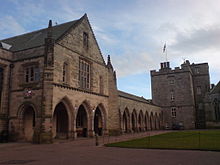
In common with the other ancient universities in Scotland, the university's structure of governance is largely regulated by the Universities (Scotland) Acts of 1858. This gives the university a tripartite constitution comprising the General Council of senior academics and graduates, the University Court responsible for finances and administration, and the Academic Senate (Senatus Academicus)—the university's supreme academic body. There are correspondingly three main officers of the university. It is nominally headed by the chancellor, a largely ceremonial position traditionally held by the Bishop of Aberdeen, but as a result of the Scottish Reformation holders are now elected for life by the General Council. There is also a rector of the university, who chairs the University Court and is elected by the students for a three-year term to represent their interests. There are also four assessors, ten masters, including the principal and vice principal, and the factor or procurator.
The administrative head and chief executive of the university is its principal and vice-chancellor. The principal acts as chair of the Senatus Academicus, and his status as vice-chancellor enables him to perform the functions reserved to the chancellor in the latter's absence, such as the awarding of degrees.













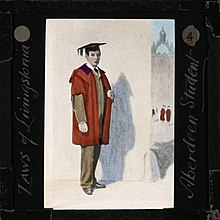
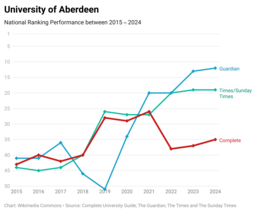
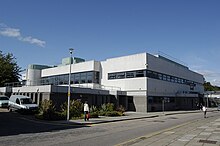

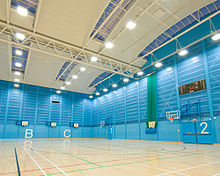
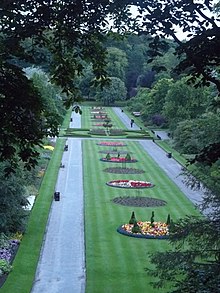
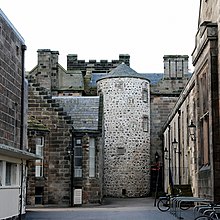
![George Wishart, early Protestant reformer[136][137]](http://upload.wikimedia.org/wikipedia/commons/thumb/9/91/GeorgeWishart2.jpg/165px-GeorgeWishart2.jpg)
![Thomas Reid, founder of the Scottish School of Common Sense.[138]](http://upload.wikimedia.org/wikipedia/commons/thumb/9/92/ThomasReid.jpg/186px-ThomasReid.jpg)
![Alistair Darling, Chancellor of the Exchequer.[139]](http://upload.wikimedia.org/wikipedia/commons/thumb/f/fb/AlistairDarlingABr_cropped.jpg/160px-AlistairDarlingABr_cropped.jpg)
![Tessa Jowell, Secretary of State for Culture, Media and Sport and Minister for the Olympics.[140]](http://upload.wikimedia.org/wikipedia/commons/thumb/6/63/Tessa_Jowell_Cropped.jpg/169px-Tessa_Jowell_Cropped.jpg)
![Gilbert Burnet, adviser to William III, philosopher, historian, and Bishop of Salisbury.[141]](http://upload.wikimedia.org/wikipedia/commons/thumb/1/1b/Gilbert_Burnet_004.jpg/179px-Gilbert_Burnet_004.jpg)
![Patrick Manson, founder of the field of tropical medicine, the London School of Tropical Medicine, Dairy Farm, and the University of Hong Kong.[142]](http://upload.wikimedia.org/wikipedia/commons/thumb/3/36/Patrick_Manson.jpg/176px-Patrick_Manson.jpg)
![Alexander Bain, analytical philosopher, psychologist, educationalist, and founder of the first academic psychology and philosophy journal, Mind.[143]](http://upload.wikimedia.org/wikipedia/commons/thumb/4/4a/AlexanderBain001.jpg/175px-AlexanderBain001.jpg)
![Robert Brown, botanist and discoverer of Brownian motion. (Was a student, but did not graduate).[144]](http://upload.wikimedia.org/wikipedia/commons/thumb/3/32/Robert_Brown_%28botanist%29.jpg/185px-Robert_Brown_%28botanist%29.jpg)
![John Arbuthnot, scientist, mathematician, court physician to Queen Anne, author, and co-founder of the Scriblerus Club. Fellow of the Royal Society (1704).[145]](http://upload.wikimedia.org/wikipedia/commons/thumb/1/17/Arbuthnot_John_Kneller.jpg/189px-Arbuthnot_John_Kneller.jpg)
![Sir James Mackintosh, philosopher, historian, and Whig politician.[146]](http://upload.wikimedia.org/wikipedia/commons/thumb/e/e0/Sir_James_Mackintosh_by_Sir_Thomas_Lawrence.jpg/176px-Sir_James_Mackintosh_by_Sir_Thomas_Lawrence.jpg)
![James Burnett, Lord Monboddo, jurist and pioneer anthropologist who anticipated principles of Darwinian evolution.[147]](http://upload.wikimedia.org/wikipedia/commons/thumb/2/2b/Lord_Monboddo01.jpg/183px-Lord_Monboddo01.jpg)
![James Gregory, discoverer of the infinite series and designer of the first practical reflecting telescope, the Gregorian telescope.[148]](http://upload.wikimedia.org/wikipedia/commons/thumb/2/25/James_Gregory.jpeg/179px-James_Gregory.jpeg)
![James Blair, founder of The College of William and Mary.[149]](http://upload.wikimedia.org/wikipedia/commons/thumb/f/f5/35_JamesBlair1941-005-1-scaled.jpg/178px-35_JamesBlair1941-005-1-scaled.jpg)
![William Thornton, physician, inventor, painter, and architect of the United States Capitol.[150]](http://upload.wikimedia.org/wikipedia/commons/thumb/1/10/Flickr_-_USCapitol_-_Dr._William_Thornton.jpg/184px-Flickr_-_USCapitol_-_Dr._William_Thornton.jpg)
![James Gibbs, architect. Studied at Marischal College.[151]](http://upload.wikimedia.org/wikipedia/commons/thumb/c/c1/James_Gibbs.jpg/179px-James_Gibbs.jpg)
![William Ogilvie, 'rebel professor', reformer, and a leading proto-Georgist thinker.[152]](http://upload.wikimedia.org/wikipedia/en/thumb/e/e7/William_Ogilvie_of_Pittensear.pdf/page1-169px-William_Ogilvie_of_Pittensear.pdf.jpg)
![Iain Glen, actor. Former English student and recipient of an honorary LLD (2004).[153]](http://upload.wikimedia.org/wikipedia/commons/thumb/5/57/Iain_Glen.jpg/206px-Iain_Glen.jpg)




